Size Dongtian Scenic Spot
Size Dongtian Scenic Spot
The Size Dongtian Scenic Area (formerly known as the Haishan Scenic Spot and Aoshan Scenic Spot) is located in the southern corner of Hainan Province, 40 kilometers west of Sanya City, with a total area of 22.5 square kilometers. It has a history of more than 800 years. It is a famous Taoist cultural scenic spot.
The large and small Dongtian Scenic Area is known as the first scenic spot of Qiongya with its beautiful seascape, mountain scenery and stone scenery. In the scenic spot, there are still "Xiaodong Tian", "Diaotai", "Haishan Wonder", "Immortal Foot", "Trial Jianfeng" and other cliff inscriptions of poetry and prose of successive dynasties. Mountains, seas and forest springs are indispensable conditions for forming a tourist attraction. Here, Yazhou Bay arc strings a hundred miles, Bibo Wanqin; Aoshan deep clouds and green forests, rocky caves; the coast is full of artistic ghosts and axes, Xiao shape objects of the size of Lei group; between the mountains and the sea like a simple and magnificent long scroll painting.
Main attractions
In the scenic spot, there are still "Xiaodong Tian", "Diaotai", "Haishan Wonder", "Immortal Foot", "Trial Jianfeng" and other cliff inscriptions of poetry and prose of successive dynasties.
Fairy stone
The word "Shou" is written by Chen Xuan. It is 2.15 meters high. Chen Xuan, the character Tunan, the self-named Fuyaozi, is a famous immortal Taoist priest in the history of Taoism in Anhui Province. It is also called "Chen Xuan's ancestor" in history. There are works such as Wuji Tu, Congenital Tu and Zhixuan Pian, which have great influence on the Northern Song Dynasty. Chen Yuanshan's five-foot-long character is composed of four characters: human, longevity, year and abundance. Stand here. It means longevity is better than Nanshan.
Yan Zhan Ting
Yanzhan Pavilion was first built in Chunyou, Southern Song Dynasty. It was destroyed in the early Qing Dynasty and rebuilt in the spring of 1993. Night landing, looking forward to the rocky shore, Xiaoyue Shitao, there is no cave sky.
Seamount wonders
During Song Chunyou's reign (1247 A.D.), Mao Kui's bureaucrat in the county was visited several times in the Aoshan Mountains, and he was given a huge stone, such as a house, looking at the sea in front, a winding lane in back, and a great view of the seamounts on the rocks. There are stone carvings of Mao Kui and scholars of all dynasties before and after the boulders. "Haiguang Changwei, the mountain is clearer and more beautiful" came from Mao Kui's "Little Cave Poetry".
ujamaa
Jianzhen (688 - 763 AD), a native of Yangzhou, was named Chunyu, a prominent monk in Tang Dynasty. In the first year of Tang Tianbao (742 AD), at the invitation of the Emperor of Japan, he traveled to Japan six times and failed the first five times. In June of the 7th year of Tianbao (748 A.D.), 35 people, including Jianzhen Master and apprentices, landed in Ningyuan Estuary (today's Xiaodongtian Scenic Area) of Zhenzhou (Sanya City) after a hurricane struck Yangzhou on their fifth voyage across the sea. Living in Zhenzhou for one year, Dayun Temple was built to spread Buddhist culture. Jianzhen's determination to go to Japan to promote Buddhism remained unchanged. At last, he made six successful eastward journeys in Tianbao's twelve years (A.D. 753). In the past ten years, Japan has made outstanding contributions to the promotion of cultural exchanges between China and Japan and the development of friendship between the two peoples. In commemoration of this historic feat, this giant group sculpture has been specially built.
The fifth landing of Jianzhen's drifting boat shows their indomitable will, confidence in victory and joy for the rest of their lives.
On May 8, 2007, Nanshan Dongtian Tourist Area of Sanya City was officially approved by the National Tourism Administration as a national 5A tourist attraction.
When all is said and done
The Jiuyi scenic spot is composed of nine big stone turtles and one small stone turtle. It is built to commemorate the return of Macao on December 20, 1999. It means family reunion. It is happy and harmonious. The "turtle" symbolizes longevity in Taoist culture. Here it takes the homonym of "turtle".
Blessed spot
Since the Tang and Song Dynasties, the small and large caves in Nanshan have been famous for their immortal caves. They are comparable to the legendary three immortal islands in the East China Sea, Penglai, Yingzhou and abbot. They are known as the immortal islands in the South China Sea and have attracted many people who seek immortal ways. According to historical records, Bai Yuchan, the famous immortal Taoist priest of the Song Dynasty and the five ancestors of the Southern Zong, returned to this place because of the exquisite beauty of the Hinan Mountains, built Taoist outlook and disseminated Taoist cultural and philosophical thoughts. Nowadays, there are many historical relics such as "the Temple of Fairy" and "the Foot of Fairy" in the scenic area, as well as many travel poems and essays. During the Chunyou period of Southern Song Dynasty, Mao Kui, a county guardian, took office here. He was thriving and loving for mountains and rivers because of his nature. He visited the Nanshan Mountains frequently and found big and small caves in the sky successively. One by one, this scenic spot was developed, leaving stone inscriptions such as "Diary of the Big and Small Caves". The Taoist school has the saying that there are 10 big cave days, 36 small cave days and 72 happy places. Nowadays, there is a "small cave sky" under the huge cliff near the sea in the scenic spot, and there is an ancient fishing platform. According to the Records of Yazhou, there is also a "big cave sky", which is surrounded by stone tables, benches and streams. It is like a fairyland and has been visited by some people, but nowadays no one has found it, full of mystery. What is more mysterious is that Mao Quinn, the county guardian, made great contributions in exploiting the caves of Nanshan. When he took office, Dunshi Chengdao and his followers flew away. Later generations, because of their admiration for their immortal wind, built Mao Zhijun Temple in Nanshan preserve and offered sacrifices.
Seamount wonders
Mountains, seas and forest springs are indispensable conditions for forming a tourist attraction. Here, Yazhou Bay arc strings a hundred miles, Bibo Wanqin; Aoshan deep clouds and green forests, rocky caves; the coast is full of artistic ghosts and axes, Xiao shape objects of the size of Lei group; between the mountains and the sea like a simple and magnificent long scroll painting. Since the Song Dynasty, Zhou Kang and Mao Kui, the prefectures of the Song Dynasty, started their journey one after another, there have been many sages and eminent scholars who visited and wrote magnificent poems and essays on it. In 1962, Guo Moruo visited "Nanshan cave sky with big and small", and praised the scenery of the scenic spot. He was praised as "Nanming Qidian" in his poem "Aoshan Mountain in Yaya County" on April 17, 1993. When General Secretary Jiang Zemin visited Nanshan cave sky with great interest, he inscribed in the scenic spot "The blue sea is far away, and Qiongya is full of spring".
Fu Shou Nan Shan
Nanshan is an auspicious mountain. It is closely related to longevity in the minds of the people. It is Shoushan in the true sense. There are many places called Nanshan in China, such as Chaozhou in Guangdong, Putian in Fujian, Dazu in Sichuan and Xi'an in Shaanxi. The most famous Nanshan Mountain is located in the East Capital of Qinghai Province. It can be found in the Dictionary of Famous Mountains and Dachuan in China (Shandong Education Press, 1992). But the Nanshan Mountain where the big and small caves are located is very unique. First, it is the southernmost mountain in China, which is worthy of its name and is well-known. Second, the small and large caves in the Nanshan Mountain are regarded as the "heaven and earth of caves" in the South China Sea. "Dongtianfudi" is a place where Taoists live in seclusion and practice immortality, and where immortals and real people live. It is also an ideal place for longevity. Thirdly, the results of the third and fourth census in China show that Hainan has the highest average life expectancy, while Sanya has the highest average life expectancy, and Nanshan has the highest life expectancy in Sanya. There are hundreds of people over the age of 86. See here is a real land of happiness and longevity; fourth, there are longevity trees that can survive for thousands of years in the area of Nanshan big and small Dongtian - dragon blood trees that are known as "the old pine of Nanshan". Dracaena is an evergreen plant of Agavenaceae. The Cretaceous dinosaur era has emerged, known as the living fossil in plants, and the World Organization for Science, Education and Culture (UNESCO) is listed as a protected tree species. China also designates it as a rare and endangered plant, which belongs to the second-class national key protected tree species, mainly distributed in tropical and subtropical Xuan area. Nowadays, this species is on the verge of extinction, but there are more than 30,000 trees growing in the Nanshan area of Sanya, mainly concentrated in the Dongtian tourist area of Nanshan, the size of Dongtian tourist area. There are more than 2,000 trees over a thousand years old, and the longest one is more than 6,000 years old. Fuze land, nurturing thousands of ancient trees; Shenzu Mountain, Xin-Wangu elves. There are enough reasons to believe that Nanshan is the home of longevity, "Shoubi Nanshan" deserves it here. "Shoubi Nanshan is not old pine" is the true portrayal of this scenic spot.
Tourism information
Reach the scenic spot
No. 25 Xinguo Tourist Bus or No. 29 Bus, stop at "Big and Small Dongtian".
Interior traffic in scenic spot
Battery cars are optional for easy sightseeing. There are two bus routes to choose from. No matter which route you choose, it won't affect your photography and sightseeing.
On the way, staff will explain the culture of the scenic spots and the location of the main scenic spots along the way. The 6-kilometer journey between scenic spots is a little time-saving and energy-saving. Battery tickets in scenic spots are one-ticket system with 15 yuan per person, no one-way or two-way trip.
The first route is the uphill route: from Coconut Forest Bar to the end of Xuanmiao Pavilion of Half Hillside Sea Viewing Platform, and then continue to walk around all the scenic spots on the hill and the seaside, and return by bus at the designated bus stop.
The second route is the seaside route: from Coconut Forest Bar to Xiaoyuewan Terminal, the farthest scenic spot, and then go back to see all the scenic spots on the seaside and on the mountain, and return by bus at the designated bus stop.

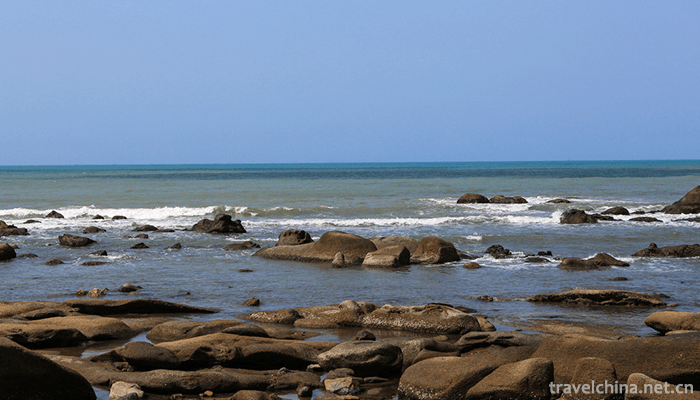
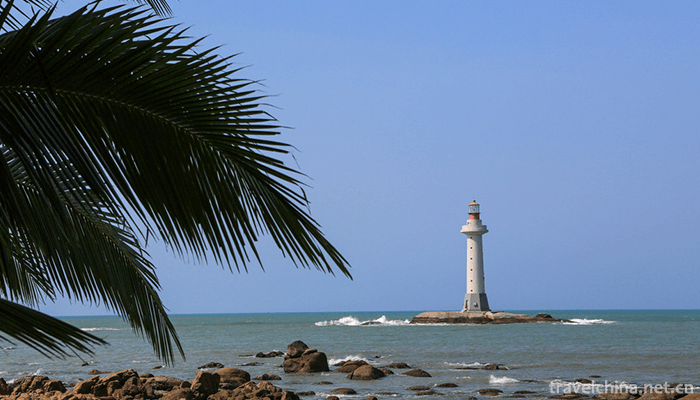

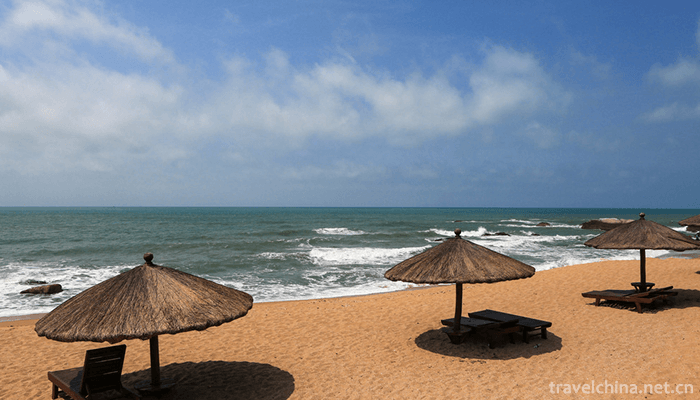
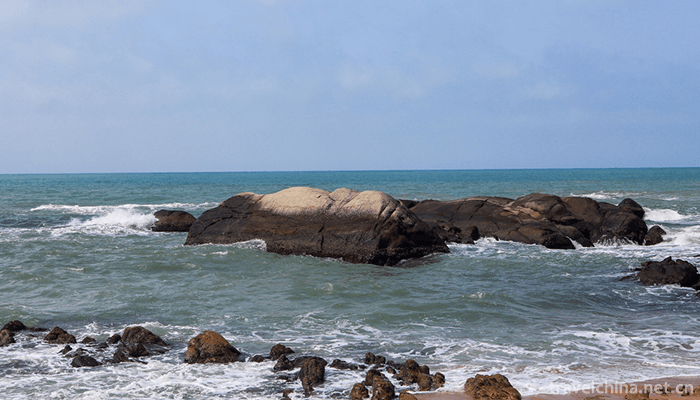
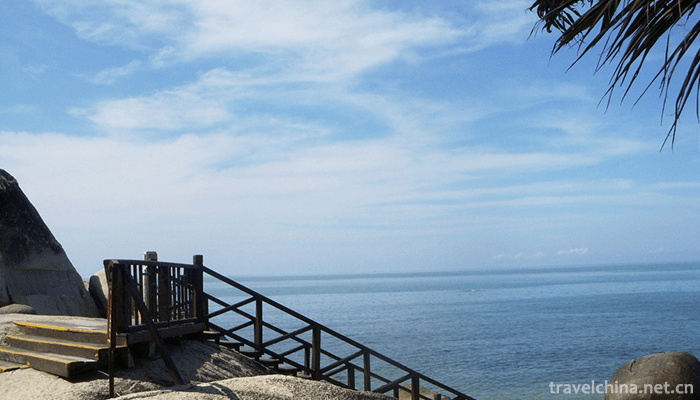
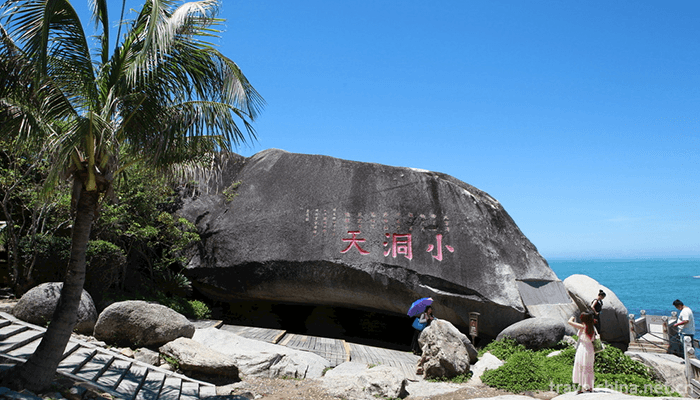

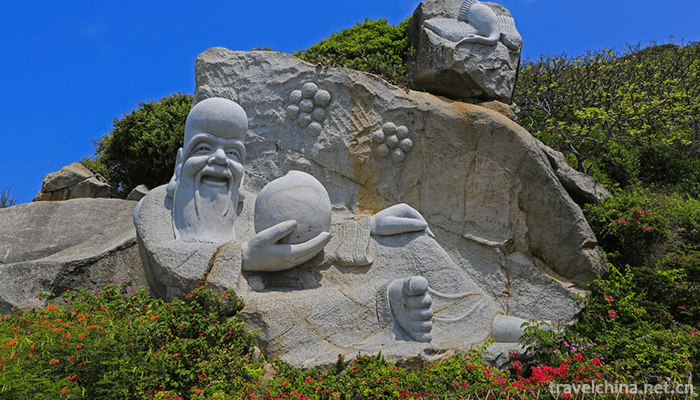
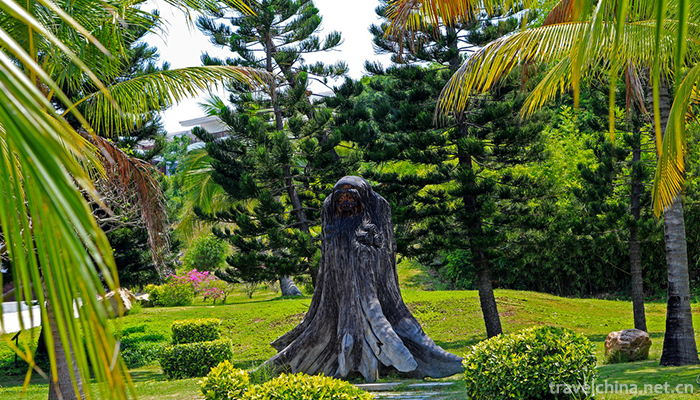

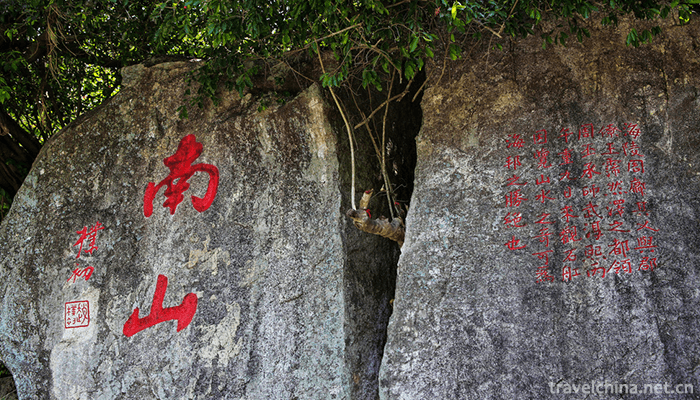
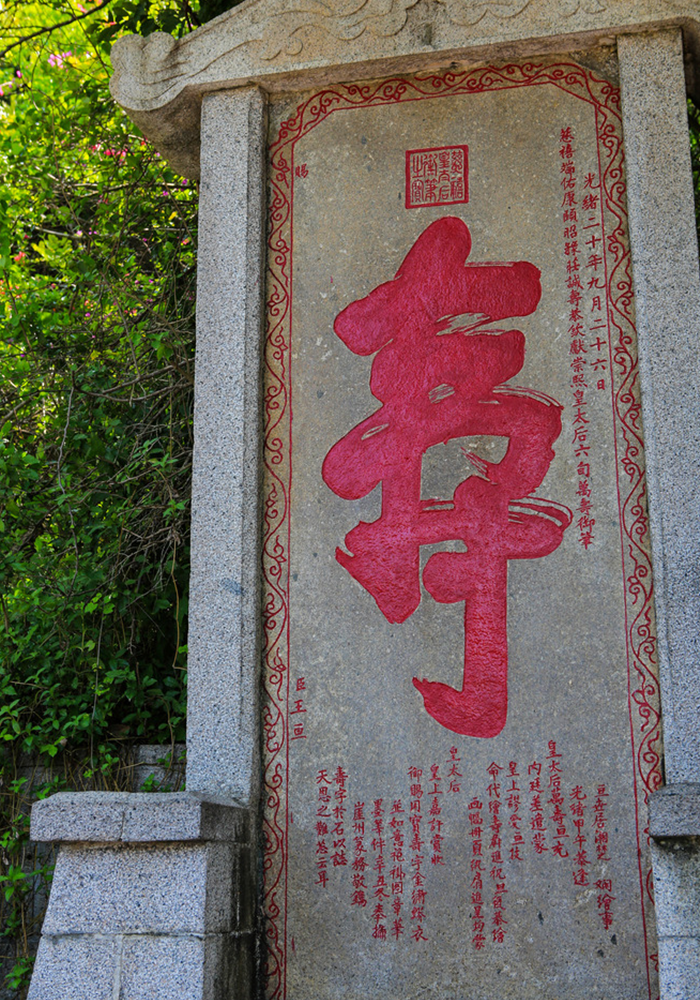
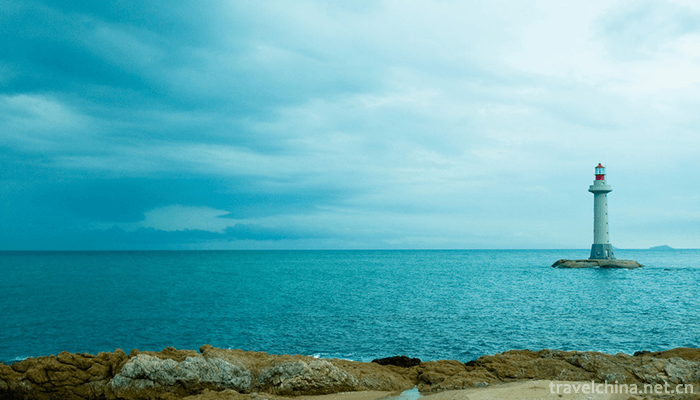
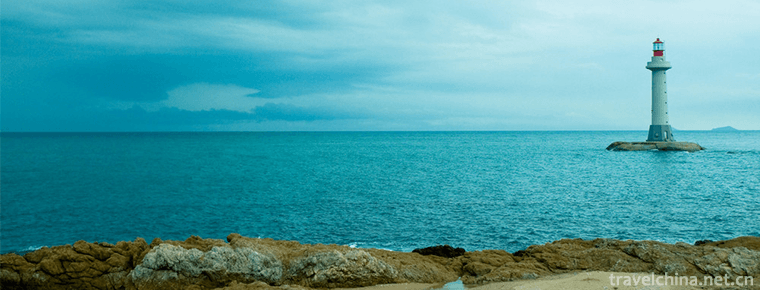
-
1.Nanning Rural World
Nanning Rural World is a large-scale eco-leisure resort built by Nanning Weining Eco-Park Co., Ltd. alone. It is a national AAAA tourist attraction with good ecological environment and high negative o
Time 2018-12-27 -
2.the Gubeikou Great Wall
The ancient Beikou Great Wall is the most complete Great Wall system in the history of China's Great Wall. It consists of the Great Wall of the Northern Qi Dynasty and the Great Wall of the Ming Dynas
Time 2019-01-12 -
3.Lingyan Temple in Jinan
Lingyan Temple, built in the Eastern Jin Dynasty, has a history of more than 1600 years. Located in the north foot of Mount Tai in the southwest of Jinan City, Shandong Province
Time 2019-02-03 -
4.Suzhou suburb mudu town
Mudu Ancient Town, nicknamed Duchuan, Xujiang and Xiangxi, is located in the southeast of Jiangsu Province and the west of Suzhou Ancient City. Located in the Taihu Lake Basin
Time 2019-02-07 -
5.Panlongxia Ecotourism Area
Panlongxia Ecotourism Area is located in the northwest of Deqing County, Guangdong Province, about 28 kilometers away from the county seat. The whole ecotourism area covers an area of 30,000 mu
Time 2019-02-07 -
6.Yanmenguan Scenic Area
Yanmenguan Scenic Spot is located in the northern part of Daizhou ancient city. South-controlled Central Plains and North-controlled Moyuan are grand military defense projects of ancient Chinese passe
Time 2019-03-01 -
7.Dark pass
Dark pass Dark Biography, as the first Creation Epic of the Han nationality, is represented by folk songs and songs. It began to circulate in the Ming and Qing Dynasties.
Time 2019-05-03 -
8.Xibo Folk Songs
Xibo folk song is an important kind of traditional music culture of Xibo nationality, which is widely spread among the Xibo people in Chabchal Xibo Autonomous County and Xinjiang. Folk songs are an im
Time 2019-07-01 -
9.Xinchang tune
Xinchang tune is one of the ancient opera tunes, also known as "falling out of tune", "Shaoxing high-key" and "Xinchang high-key". With Xinchang as the center, it has spr
Time 2019-07-06 -
10.Health preservation in traditional Chinese medicine
Health preservation in traditional Chinese medicine refers to a kind of medical activity that can prolong life by taking care of life, strengthening physique and preventing diseases in various ways. H
Time 2019-08-03 -
11.China Youth University of Political Studies
China Youth University for Political Science (China Youth University of Political Studies) is located in Beijing. It is the state-level "Communist Youth League Central Research Center for the the
Time 2019-12-25 -
12.History and culture of Yibin
Yibin has 34 world-class, national and provincial scenic spots and 58 national and provincial key cultural relics protection units. Among them, there are seven cave cliff tombs (Eastern Han Dynasty), Jiuzhou tower (Song Dynasty), Daguanlou (Qing Dynasty), etc.
Time 2020-12-18